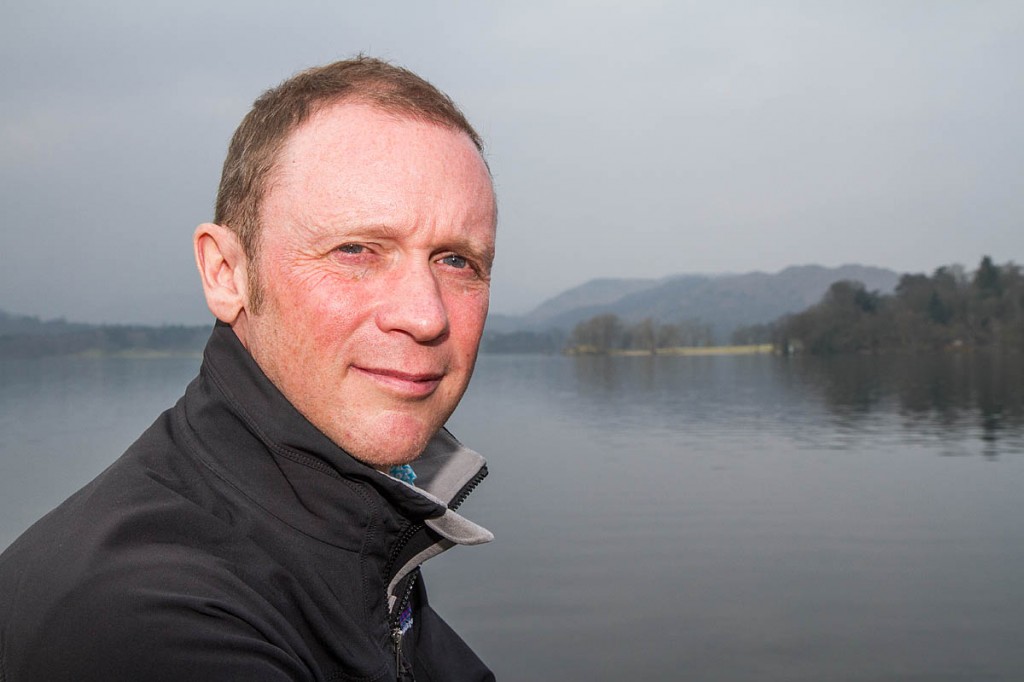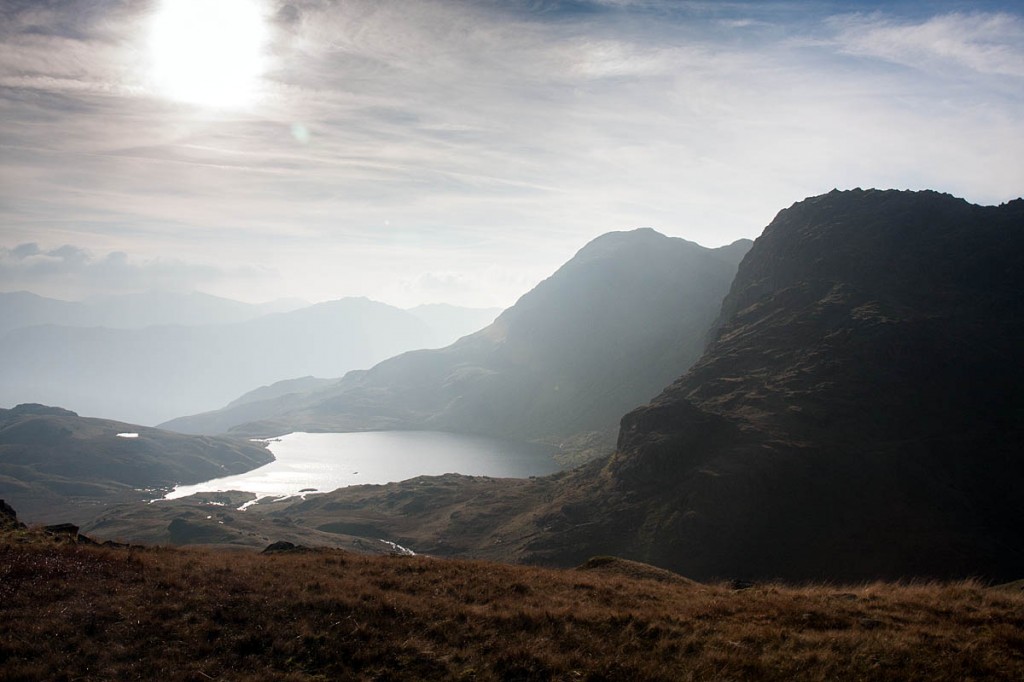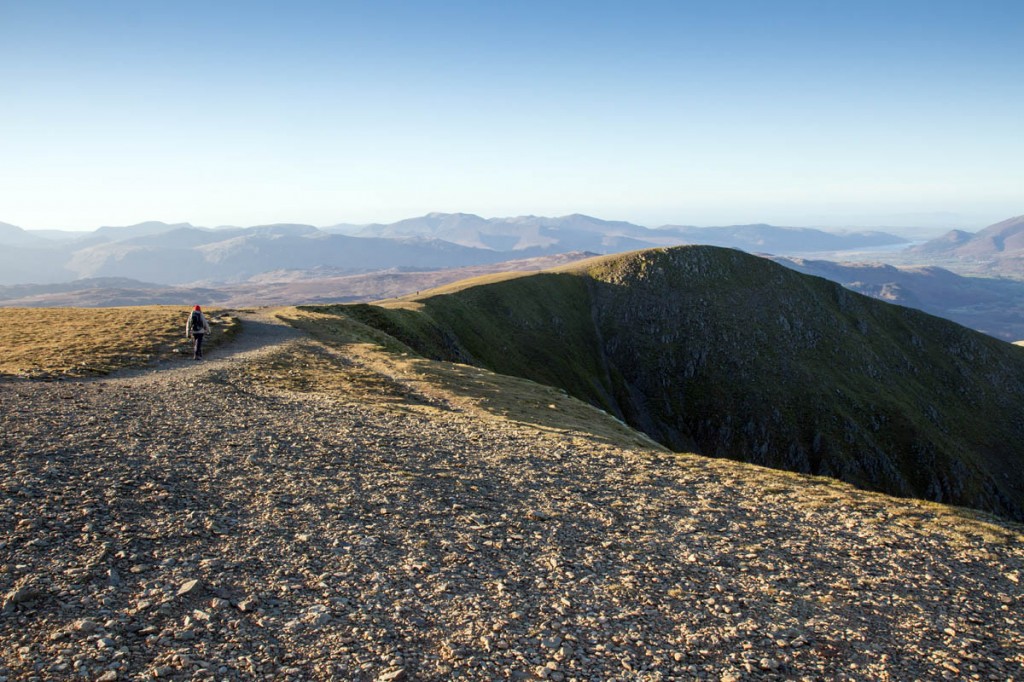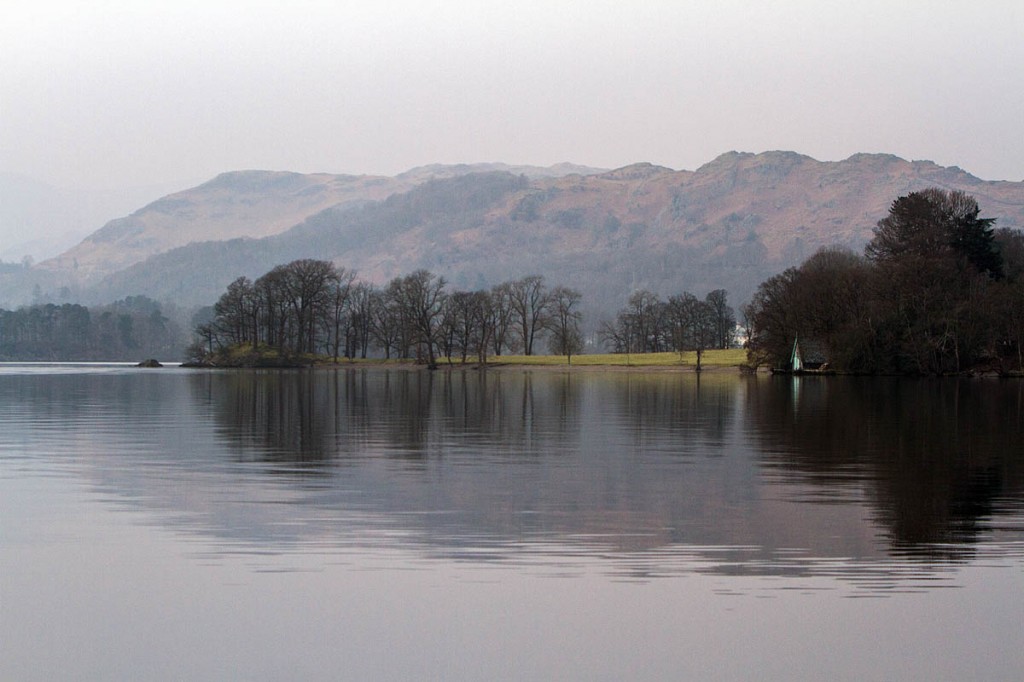The Lake District National Park Authority has come under sustained attack from outdoor enthusiasts, politicians and campaigning bodies for its decision to put eight pieces of land on the market, including the well loved Stickle Tarn, in the shadow of Pavey Ark and its challenging Jack’s Rake scramble.
In the end, only two of the eight properties were sold, though the authority is still in talks with groups about Stickle Tarn and is consulting on selling one of the other areas to a charity group.
But the feeling among many is that it is wrong to sell publicly owned assets to private individuals or companies in a national park.
The authority’s chief executive Richard Leafe has faced calls to resign over the matter and has been the focus of much ire. Here, he gives his reasons for the sale and pleads for understanding of the park bosses’ motives. But he also warns there is more to come…
Grough asked how the Lake District authority came to own the properties in the first place. Mr Leafe said: “We’ve got a large property portfolio, about £13m-worth of property, 186 different properties scattered around the national park that the authority has acquired over the 60 years of it being a national park.
“They have been acquired through a variety of different means and through different routes. In a nutshell, the authority has bought them at different times in the past to provide some improvement to the national park in some way, either environmental improvements, conservation of assets, or providing for public right of way and access, which hasn’t always been enshrined in law as it is at the moment of which the eight [put up for sale] were very typical examples.”
When the deadline passed for the receipt of offers for Stickle Tarn, the authority announced it had been unable to find a suitable buyer. What was behind that announcement?
“We had five bids for Stickle Tarn and we’ve come to the view that, while those were good bids and very well intentioned, they didn’t meet our requirements for responsible ownership going into the future,” the chief executive said.
“So we’re not at a point where we’re able to sell Stickle Tarn, but we are interested in continuing to talk to particular community groups and other interested parties about whether or not there is a buyer there.”
A community group, the Langdale Valley Association, applied to have Stickle Tarn declared a community asset under the coalition Government’s Localism Act. This would give the group six months to find the cash to buy the land and the sale would have to be put on ice in the meantime. What happened with the association?
“We will keep talking to the Langdale Valley Association about the future of the tarn,” Mr Leafe said. “I don’t sense there’s an appetite from that group for ownership. What I do sense from that group is support for our work in being able to look after it, so we are keen to carry on talking to them about what might emerge from that.
“So at present the authority is keeping ownership of Stickle Tarn and we are seeking other partners to take it forward from here, not necessarily selling it. We are very open minded to the eventual outcome.
“It is still for sale, so if we can find the right owner or owners, we would be prepared to sell still.”
Mr Leafe said Longbridge, at Portinscale, and Ladywood at White Moss have been sold. “The buyers are two individual purchasers who we believe meet our responsibility criteria for the sites concerned,” he said.
“Our intention is still to sell the properties for which there were no bids although they are not currently on the market, so we are going to reflect for a while, see if anything happens after the tender period we’ve just been through, and at some point remarket those properties.”
The Lake District boss said a charitable organisation is interested in Blea Brows on the shore of Coniston Water. “We want to talk to that charity and discuss with the local community whether that would be a suitable destination for that property in terms of its ownership.”
Richard Leafe maintains there is a misconception that only by owning the land can the authority protect it and that selling off some of the authority’s assets is not the big deal that some have made out.
“I understand people’s emotion around public ownership of land, people’s attachment to parts of the national park, some of which they see are for sale and I understand that, at face value, that seems a very concerning concept,” he said.
“I want to stress that it is nothing out of the usual in terms of business in the national park, in terms of doing the business of protecting the national park, where 96 per cent of it is not in the ownership of the national park authority. It is in a mixture of ownerships from charitable bodies, to other government agencies to private companies, to private individuals, a real diverse selection of land owners.
“Our model for running the national park is not based around the principle of public land ownership. We have the ability to conserve land that is under private ownership and that is a long-established principle in terms of the way we look after Britain’s national parks.
“I would also say we are selling a very small proportion of our land holding of less than four per cent of the national park and in order for us to invest in the future of our properties, we need to be able to divest from the past, where the reasons for holding that land no longer apply.
“So I have had to apply a very hard-headed approach to saying is it still necessary for us to tie taxpayers’ money up in this land or might there be something more useful and more valuable to conserving the park as a whole that we can put this money into?
“So we are losing this capital in order to invest in other properties that we own in order to invest our work on the fabric of the national park on properties that we don’t own and indeed to have the ability to buy land where we need to secure particular access improvements to the park and its infrastructure is a really critical thing we need to be able to do.
“Having all our assets and cash tied up in a myriad of different properties is perhaps not the wisest use of that money.”
He tried to assure outdoor enthusiasts and the general public that selling off the land in question would not mean they would lose access to it in the future.
“It’s critical to us in the decision whether or not we can sell the properties that they will still be available for public use,” he said. “It’s critical to make sure that, in law, the ability to access and look after them is they have assets of conservation value such as woodland, that that is enshrined in law through the property sale. So practically, that means some areas we have dedicated as open access land under the Countryside and Rights of Way Act and other in other areas, we have put public footpath designations through the land, and that remains.
“Having the land as access land is covenanted in some of the cases too. So it’s a real belt and braces approach in ensuring the public interest in the land is secure through the sale as well as trying to find buyers at this point in time we believe share our aims to conserve and look after the national park.”
Opponents of the sale of public land are unlikely to welcome the national park’s revelation that more sell-offs are likely. Richard Leafe told Grough: “As part of our property review, we are likely to bring more land and property to the market – probably property; we’ve got some built property around the place we are considering whether or not we need any longer.”
It’s not simply down to the fact that the Government has cut the national park’s budget savagely, he said. “This is good management of our £13m property portfolio.
“Releasing that capital asset to invest in the national park fabric elsewhere, both on and off our own properties, is something we would need to be doing anyway. It does, nonetheless, mean it reduces our running costs if we are able to transfer properties into the private market, so it does help us save us money.
“But more importantly for me, it’s good and proper management of a large property portfolio.”
And there came a final plea to Grough readers and the wider outdoors community to back the Lake District National Park Authority’s actions.
Richard Leafe said: “I would want the public and your readership to have trust in us as an organisation to do what we think is necessary to look after this national park in the interests of the public and your readers in particular.
“We have passion for the place just as much at our heart as your readers do.”




Terry Fletcher
21 March 2015There is a sickening stench of hypocrisy about politicians who have starved all national parks of money for decades and cut budgets still further in recent years now complaining that the parks are having to sell land.
More importantly, the Lakes is a national park, not a nationalised park. If the only way to protect is and preserve access is to buy all of it then the whole national park system is a pointless charade. Happily that is not the case and there are stringent laws already in place to protect places like Stickle Tarn which is a SSSI and on CRoW access land.
Instead of getting agitated about whose name is on the deeds of Stickle Tarn protestors' time would be better spent fighting the Lowther Estates's revived plan for a so-called Welcome Hub (aka shop anbd event centre) between Grasmere and Rydal, which represents a much greater threat to the national park
Clive Hutchby
21 March 2015Back in November the Lowther estate submitted a similar planning application . . . that was rejected by members. The worse thing, the worrying thing, however, was that the LDNPA's own planners (and by implication, the CEO Richard Leafe) recommended that this proposal was accepted. That's why people are so worried; they believe, based on this and based on Leafe being in favour of the Glenridding zip wire plan, that the leadership of the authority is out of touch and out of control.
alan.sloman
21 March 2015Given that the National Park has had its funding slashed, how would objectors to the Lake District National Park Authority’s plans to sell of some of its assets?
That's the nub of the question; it's all very well bleating about the situation. If you don't want this to happen, what do you propose in its stead?
Eddie
22 March 2015The 'gap' increases. Now the rich buy the national parks.
madcarew
22 March 2015Trust him, why? He seems to be spouting the same corporate rubbish as, Senior NHS Managers, polititions, Bank Chief Execs, and other QUANGO Chiefs.
Clearly the outdoor public are against this sell off just as they were against the sell off of the Forestry Commision. It feels like the Authority are up to something suspicious. Resign...
LakesBloke
23 March 2015madcarew - of course you should trust him...he's the one who brought us The Adventure Capital without consulting the indigenous communities if that's what they wanted. He brought is ANPR Nazi style Car Park management..He wants to turn the Lake District into a World Heritage site...which will bring more tourists than ever, but do nowt for the communities - no better roads, no real external investment in proper jobs, (not minimum wage tourism related). Oh yes, trust him. TRUST HIM!
smugglersfc
26 March 2015Absolute digrace, handing over NATIONAL land to the rich and powerful, soon be back to the middle ages & serfdom for the working classes.
Henry
05 April 2015Power Mad .... He has the look of a Dictator about him! ..... Why oh Why would we want WH designation? Restrictions, tourism , no advantages. Next thing we will have tree covered slopes and the essential character of the Lakes will be lost ..... Forever...
Henry